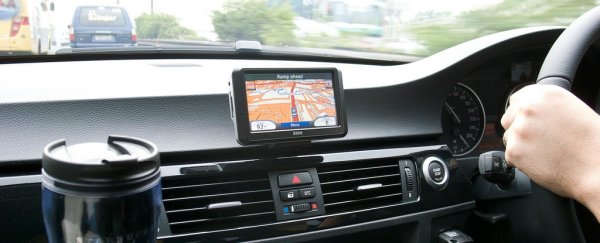Most of us rely on global positioning systems (GPS) to figure out where we're going on a daily basis, but current technology works on the scale of metres - and although it can usually pinpoint which road you're on, it often can't determine exactly where you are on that road.
But that could be about to change, thanks to new research that makes GPS accurate right down to the centimetre level - so, less than half an inch.
And the new technology won't just stop your Uber driver from getting lost en route, it could also be the key to bringing driverless cars on the road, and even making airline travel safer.
"To fulfil both the automation and safety needs of driverless cars, some applications need to know not only which lane a car is in, but also where it is in that lane - and need to know it continuously at high rates and high bandwidth for the duration of the trip," said lead research Jay Farrell, from the University of California, Riverside.
Right now, GPS devices calculate your location and velocity using a network of space-based satellites. By measuring the time it takes to receive signals from four or more of these satellites, they're able to pinpoint your location to within approximately 10 metres.
A slightly improved system has recently come online, known as differential GPS (DGPS), and this brings the accuracy down to 1 metre thanks to the use of ground-based reference stations.
But that's still not good enough if we ever want to sit back and read the newspaper while a driverless car ferries us to work.
To fix this, Farrell and his team developed a new technique that supplements existing GPS data with on-board inertial measurements from a sensor. The merging of those measurements in itself isn't new, but in the past it's required super-expensive computers to combine the two data sources, which meant it was never going to work in your car or smartphone, regardless of how accurate it was.
But the researchers have now created a new set of algorithms, which reduce the computations and processing power needed to integrate the two systems by several orders of magnitude, making the technology a whole lot more affordable.
So affordable, in fact, that we could soon see this centimetre-level GPS used in our personal devices.
"Achieving this level of accuracy with computational loads that are suitable for real-time applications on low-power processors will not only advance the capabilities of highly specialised navigation systems, like those used in driverless cars and precision agriculture," explains Farrell, "but it will also improve location services accessed through mobile phones and other personal devices, without increasing their cost."
The new technology isn't going to stop your GPS getting all messed up when you're in the middle of the CBD or driving through a tunnel - that's the result of interference with the satellite signals - but it's going to give the system a whole lot more information to base your location on, and that should make a world of difference for navigation. We can't wait.
The results have been published in IEEE Transactions on Control Systems Technology.
